
- Index
- Artist
- Antonio Devity (4)
- Charles Levier (3)
- Henri Matisse (7)
- Illegible (5)
- Illegible Signature (58)
- Jean Daumier (3)
- Julius Polek (3)
- L. Sihiinzel (4)
- London (4)
- Maren (3)
- Max Ernst (6)
- Reinald Morgen (3)
- Remedios Varo (7)
- Salvador Dali (6)
- See Description (9)
- T.bailey (4)
- Unknown (109)
- Unsigned (7)
- Yu Liang Jin (4)
- Yu Yin Xin (4)
- Other (919)
- Framing
- Material
- Size
- Theme
- Type
Large Painting Antique Mythical Angel Fangs Oil on Canvas Xvii Century Giove
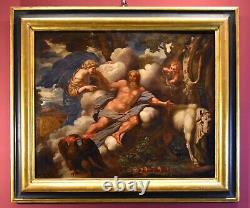
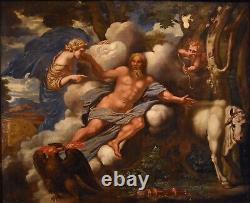
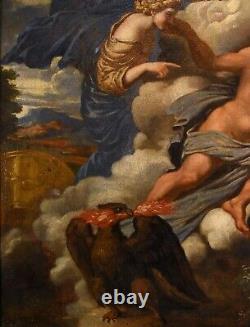
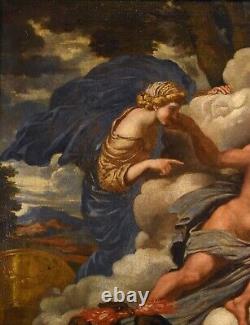

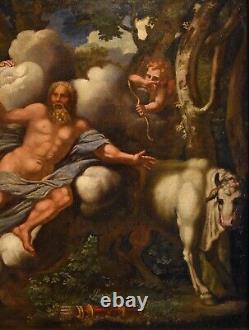
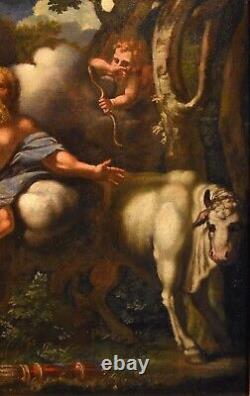
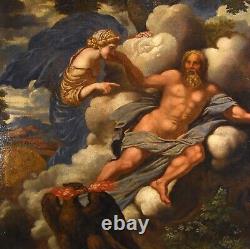
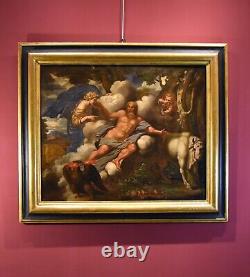



Large Painting Antique Mythical Angel Fangs Oil on Canvas Xvii Century Giove. The description of this item has been automatically translated. Giovanni Angelo Canini (Rome, 1608 - Rome, 1666) - The myth of Jupiter, Io and Juno Oil on canvas 84 x 100 cm - framed 106 x 125 cm. The work is accompanied by the expertise of prof.
The complete details of this work can be consulted directly from the following - LINKS.'Thank you for having brought to my attention this qualitative and interesting mythological scene oil on canvas, cm. 84 x 100 which refers to an episode narrated by Ovid in his Metamorphoses, precisely the myth of Jupiter and Io, one of the most fascinating unrequited loves of classical mythology, an episode taken from ancient Latin culture, and taken up starting from the Renaissance, such a poignant love story with deep symbolic meanings. One day Zeus falls madly in love with Io, priestess of Hera, daughter of Inachus king of Argos, and tries to conquer her.
But to hide his infidelity from his wife Hera, he envelops the earth with a blanket of clouds, without imagining that she would discover his trap very quickly. Suspicious, she orders the mists to dissolve, thus managing to find her husband who, to protect himself from his wife's anger, transforms the nymph into a white heifer. However, this subterfuge did not deceive Era who, once she arrived in the presence of her husband, asked him to give him the animal. Although Zeus knew that granting her meant condemning her to a sad fate, he preferred to avoid the wrath of his wife and handed her the heifer. I have dwelt on the description of this scene because, although it is a subject often taken up in painting starting above all from the second half of the seventeenth century and in the first half of the following, it is very rare to find examples of it so accurate in the details that make aware of the succession of events.
Furthermore, despite the considerable size, typical of an aristocratic picture gallery, it has a clear and well-defined figurative imprint in the contours, together with a vivid pictorial imprint but with frozen colors, which denounce the presence of an author also familiar with the engraving which was probably his main activity together with the constant practice of drawing. In fact, the painting considered here can be traced back to the hand of Giovanni Angelo Canini (Rome 1608 - 1666). A testimony of sure autography that could be linked to the series of works created by Canini for Cardinal Camillo Astaldi, a patron of the arts who in 1645-50 had commissioned him various pictorial decorations with profane subjects (some signed), including "Stories of Rinaldo and Armida ", intended for his Castle Theodoli di Sambuci (near Tivoli), springs of which are now lost.
Datable to around 1650, the work reflects Canini's emancipation from the initial prevailing stylistic approach based on Domenichino, of which he was a direct pupil until the master's departure for Naples, remaining however tied to his classicistic orbit, but affirming his evident interest also for the upright affirmations of the Baroque. In fact, this painting, although created with a figurative language that is still strictly classicistic, nevertheless follows an already Baroque narrative taste, in the detailed description of the events, in which the human figure still plays a leading role, albeit with clear arboreal elements in the background. With regard to his pictorial activity for private use, unfortunately largely lost or obscured by deviant attributions, it is worth remembering that Giovanni Angelo Canini had acquired significant credit among the Roman cultural elite, thanks to the close relationship of esteem with regina Christina of Sweden, as well as the documented relations with the Savoy court.
The conservation conditions of the work appear to be good. If you would like to see this or other works in person, we will be happy to welcome you to our new gallery in Riva del Garda, in Viale Giuseppe Canella 18. We are waiting for you!
Although Zeus knew that granting her meant condemn. Giovanni Angelo Canini (Roma, 1608 - 1666).

